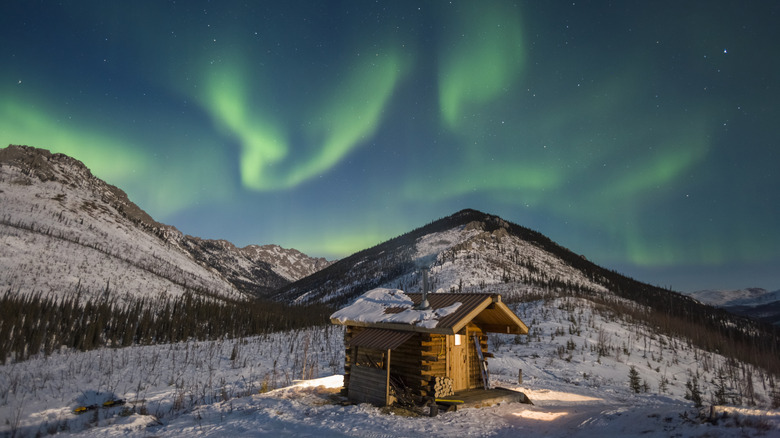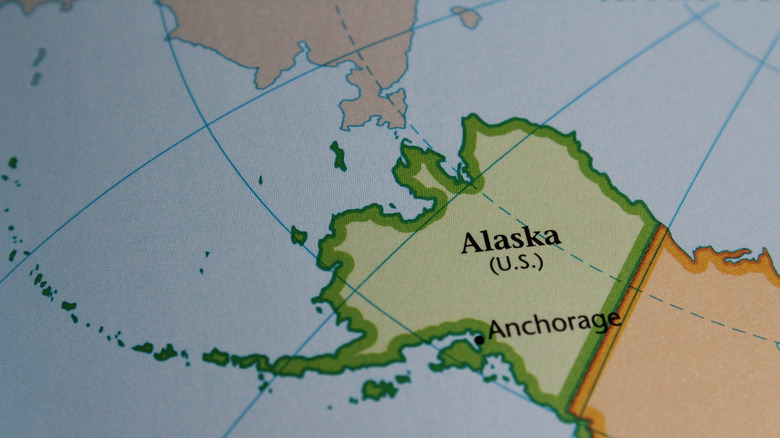A State Known For It's Cold Weather Won't Tax Your Social Security Income
Alaska has famously chilly winters — think average highs between 5°F and 30°F (-15 to -1.1 °C). As such, it might not be everyone's ideal place to spend the season. But living there has a cool perk: no state income tax. That means all the money you make, including benefits, isn't taxed by the state. It's one of only nine states with this benefit, along with Florida, Nevada, New Hampshire, South Dakota, Tennessee, Texas, Washington, and Wyoming. This policy means more money in the pockets of retirees, especially those who depend a lot on Social Security.
While Social Security might get taxed at the federal level depending on your total income, Alaska doesn't tax it at the state level. This gives retirees a nice edge, helping them keep more of their hard-earned money from pensions, 401(k)s, and other retirement savings untouched by state taxes. Unlike Alaska, many states tax Social Security benefits either partially or fully, which means retirees end up with less money.
Alaska's financial incentives for retirees
Beyond tax breaks, Alaska gives its residents a yearly cash bonus called the Permanent Fund Dividend (PFD), which comes from the state's oil profits. Set up in 1976, the PFD makes sure Alaskans directly benefit from their rich natural resources, as the state's main money-maker, its oil and gas sector, contributes heavily to its budget.
Alaska also collects severance taxes on these natural resources and earns money from the Alaska Permanent Fund, which invests oil royalties. The Alaska Permanent Fund Dividend (PFD) can change each year because it depends on how well the state's investments perform, along with oil prices and the funds set aside in the Permanent Fund itself. Recent payouts show this variability, ranging from $992 in 2020 to $1,312 in 2023.
The latest is $1,702,which is a sum set in 2024 and carried over to 2025. But you don't qualify if you were absent from Alaska for more than 180 days in the previous year, such absences must fall under allowable exceptions. You should have been physically present in Alaska for at least 72 consecutive hours at some point in the previous two years. Applications are typically accepted from January 1 through March 31 each year, with the PFD generally distributed in October.
Qualifying for the Permanent Fund Dividend (PFD)
To qualify, you must meet specific residency and legal requirements throughout the previous calendar year before you apply. Firstly, you must have been a resident of Alaska for the entire calendar year immediately preceding the year in which you apply for the dividend. On the application date for the PFD, you must intend to remain an Alaska resident indefinitely. You must not have claimed residency or received benefits from another state or country after December 31 of the year before applying. You must also not have been sentenced for a felony or incarcerated for a felony or certain misdemeanors during the year prior to applying.
While the financial perk of Alaska is, no doubt, tempting for retirees, before you move, weigh the unique living conditions. The state's tough winters and limited daylight from January to February can bump up heating and utility bills significantly, leading to Alaskans facing much higher heating costs than most Americans. For context, the average U.S. household spends roughly $154 per month on electricity, whereas Alaskan households spend about $359 a month on heating. This is why Alaska made Money Digest's list of states that would cost you if you retire there.


